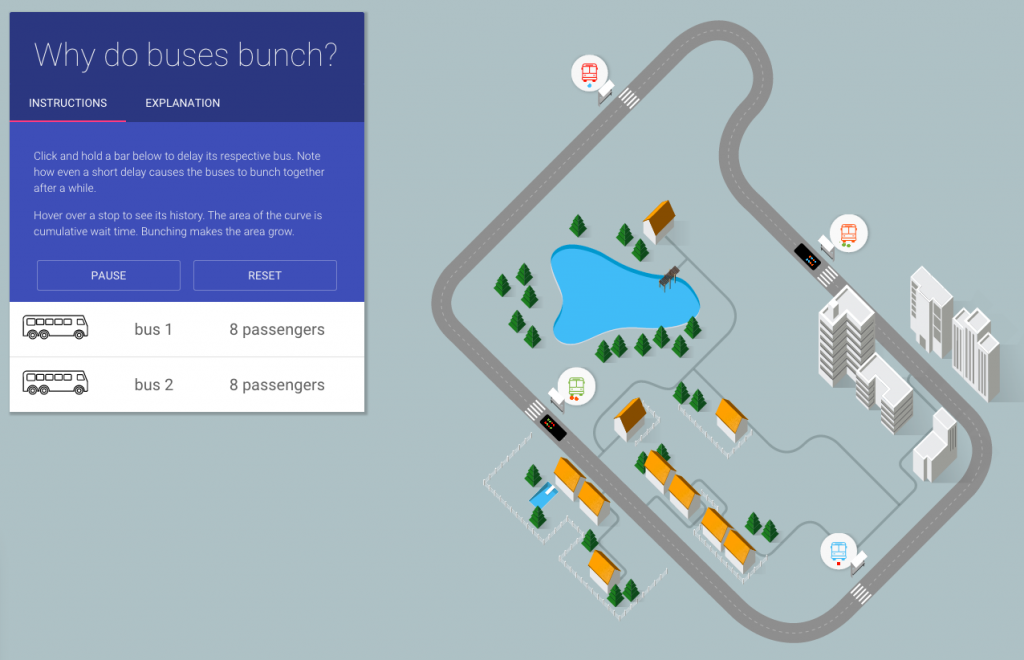We like to drive in convoys
This isn’t precisely statistics, more applied probability, but that still counts. First, an interactive from Lewis Lehe, a PhD student in Transport Engineering at UC Berkeley. It shows why buses always clump together.
You might also like his simulations of bottlenecks/gridlock and of congestion waves in traffic (via @flowingdata)
And second, a video from the New York subway system. When a train gets delayed, it holds up all the trains behind it. More surprisingly, the system is set up to delay the train in front of it, to keep the maximum gap between trains smaller.
Thomas Lumley (@tslumley) is Professor of Biostatistics at the University of Auckland. His research interests include semiparametric models, survey sampling, statistical computing, foundations of statistics, and whatever methodological problems his medical collaborators come up with. He also blogs at Biased and Inefficient See all posts by Thomas Lumley »
